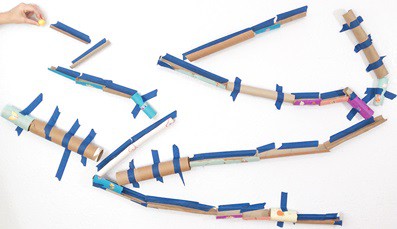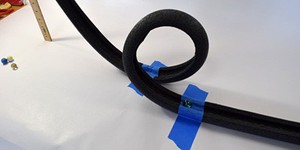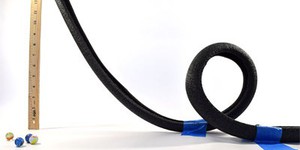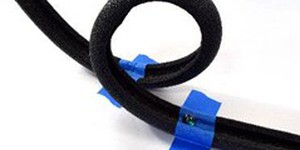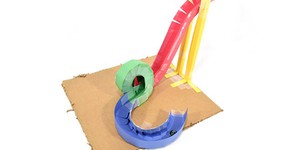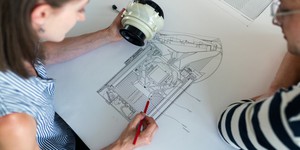Summary
Introduction
In this activity, you will use recyclable materials to make your own wall marble run. A marble run is a fun toy and a great way to learn about physics concepts like kinetic and potential energy. Do you think your marble will make it to the end of the track?
Materials
- Cardboard tubes
- Painter's tape or masking tape
- Scissors
- Marbles
- Paper
- Pencil
- Optional: markers, stickers or colored tape and paper for decoration.
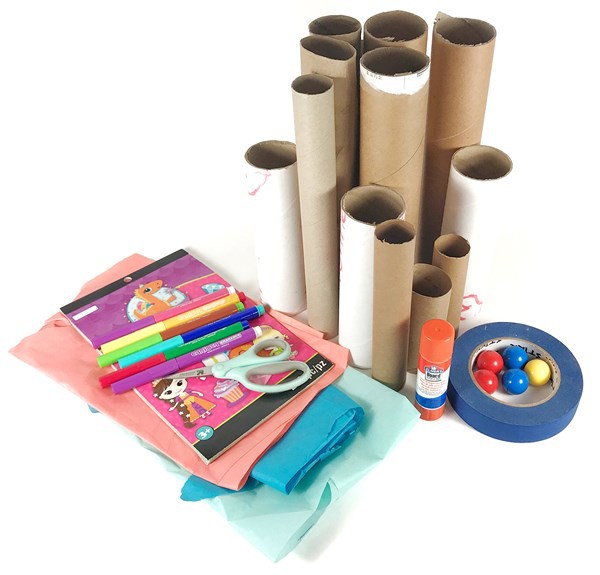 Image Credit: Svenja Lohner, Science Buddies / Science Buddies
Image Credit: Svenja Lohner, Science Buddies / Science Buddies
Prep Work
- Find an empty section of wall that you can use to build your marble run.
- Explore your materials.How many cardboard tubes do you have? How big of a marble run do you think you can build? What can you use to catch your marble at the end?
Instructions
- Think about a design for your marble run before you start building. For example, will it zig-zag back and forth? Do you want to include any flat or even uphill sections? Also think about whether you want to use the whole tubes or cut them in half. Make sure your marble run starts high above the ground.Why do you think it is important to start the marble run high above the ground?
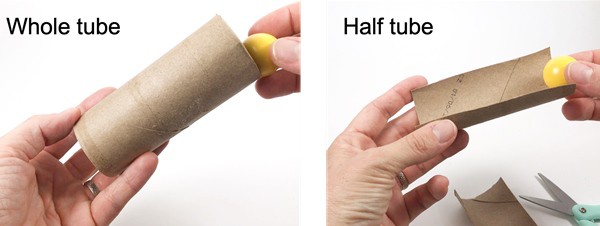 Image Credit: Svenja Lohner, Science Buddies / Science Buddies
Image Credit: Svenja Lohner, Science Buddies / Science Buddies
- If you like, you can decorate the cardboard tubes with stickers, wrapping paper, or markers.
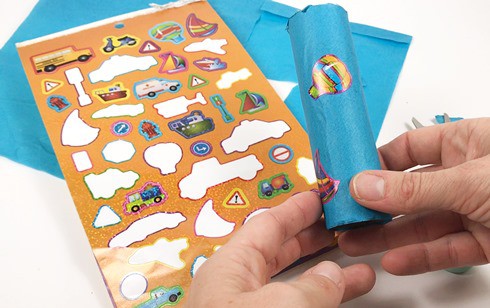 Image Credit: Svenja Lohner, Science Buddies / Science Buddies
Image Credit: Svenja Lohner, Science Buddies / Science Buddies
- Start building your track. Using your cardboard tubes, assemble your track according to your plan. Tape the first cardboard tube to the wall with a long strip of tape. Place your second tube next to the first one, and so on. Don't build your whole track all the way down to the floor yet. Build a small segment and then stop to test it.What do you have to think about when connecting the tubes?
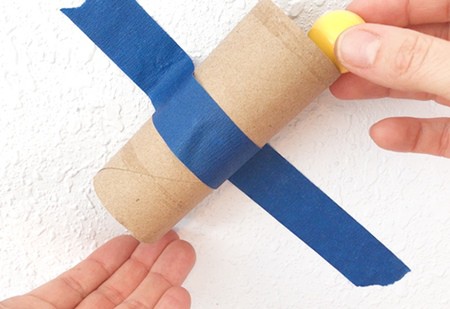 Image Credit: Svenja Lohner, Science Buddies / Science Buddies
Image Credit: Svenja Lohner, Science Buddies / Science Buddies
- Test your marble run. Place the marble at the top of the track and let it go. Watch carefully.What happens? Does it make it the whole way to the end of the track?
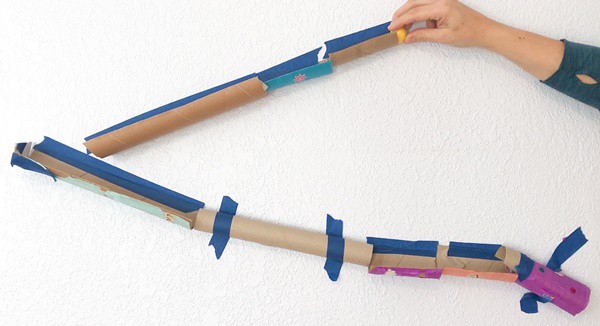 Image Credit: Svenja Lohner, Science Buddies / Science Buddies
Image Credit: Svenja Lohner, Science Buddies / Science Buddies
- If your marble didn't make it to the end, try figure out why. Is there a spot in your track where the marble got stuck? Was the marble going too slow to make it over a hill? If necessary, make changes to your design, like adjusting the angles of your tubes or improving the tube connections and try again.Can you figure out why the marble didn't make it to the end? What do you have to do to fix your problem?
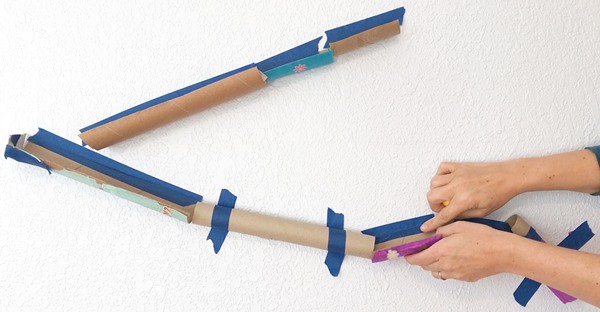 Image Credit: Svenja Lohner, Science Buddies / Science Buddies
Image Credit: Svenja Lohner, Science Buddies / Science Buddies
- If the marble made it the whole way to the end, try to add more track segments to your track, or build alternative routes by connecting more cardboard tubes.When putting together your track, how do you think the angles between the different cardboard tubes matter?
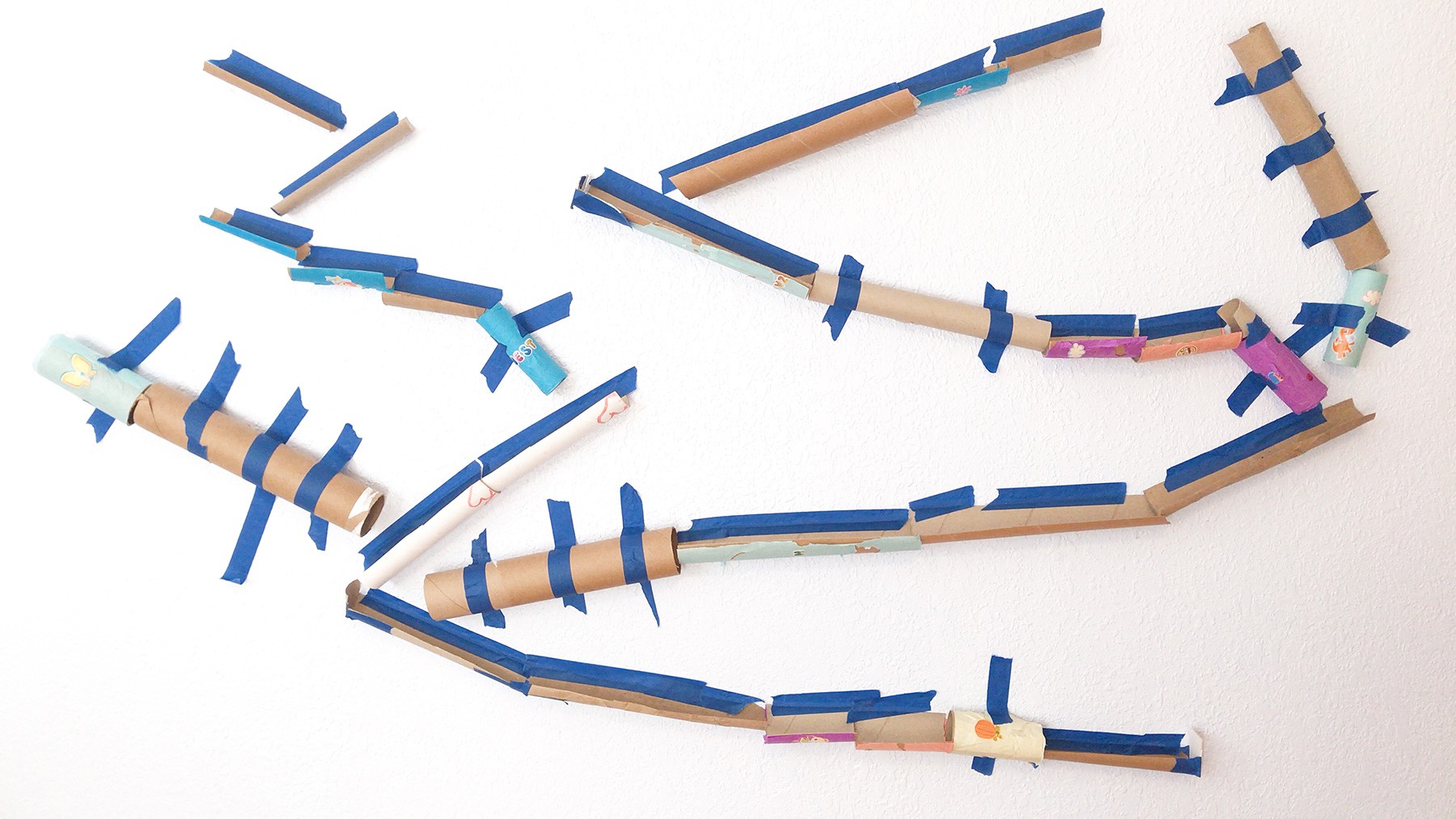 Image Credit: Svenja Lohner, Science Buddies / Science Buddies
Image Credit: Svenja Lohner, Science Buddies / Science Buddies
- Keep refining your track until you are happy with your final design. Do not forget to test your track often by running a marble through it. Every time the marble runs down the track, observe it closely.What do you observe when the marble goes from one tube to another, switches direction, or runs through flat and uphill segments in your track?
Cleanup
- Remove all tape from the wall and recycle your cardboard tubes.
What Happened?
Did your marble make it all the way down the marble run? It might have taken a few tries to get it right! For example, your marble could have gotten stuck if two adjacent tubes weren't aligned properly. It might have slowed to a stop on a long, flat section, or been unable to get over a hill because it was not going fast enough. It might even have flown off the track because it was going too fast! Read the Digging Deeper section to learn more about the physics behind your marble run.
Digging Deeper
What happens as your marble races down your marble run? First, when you raise your marble off the ground, you give it gravitational potential energy*. Potential energy is the energy an object stores due to its height off the ground and its mass. When you release the marble, gravity starts to pull it down the track. Its potential energy is converted to kinetic energy, the energy of motion. The marble also loses a small amount of energy due to friction, or when it collides with the walls of the track. This energy does not disappear, however—it is converted into other forms like heat and sound. The total amount of energy in the system remains the same. This is called conservation of energy.
What does all this mean for your marble run? It is very important if you want your marble to go up over a hill! As it goes back up a hill, some of the marble's kinetic energy is converted back to potential energy. The marble will need enough kinetic energy to get over the hill, or it will come to a stop and then roll backwards. Due to conservation of energy, the marble can never go over a hill higher than where it started. As the marble loses energy due to friction and collisions, it may have trouble getting over smaller hills. Friction can even cause the marble to come to a stop on a long, flat stretch of track. This means that if you want your marble to do something exciting like go up a ramp, through a loop, or over a jump, it is important to build a smooth track so the marble does not lose too much energy to bumps and collisions.
*Note: there are other kinds of potential energy, like elastic potential energy (the energy you get when you stretch a rubber band). In this project, we are only talking about gravitational potential energy, so we usually drop the "gravitational" and just say "potential energy."
Ask an Expert
For Further Exploration
- Use additional recyclable materials to build your track, such as egg cartons, yogurt containers, milk jugs, boxes, etc.
- Try running other objects down your track. Does the shape, mass, texture, or size of the object make a difference?
- Instead of using cardboard tubes, use pool noodles or pipe insulation to build your wall marble run. Do they work better than the cardboard tubes?
- Can you find a way to build a loop into your marble run? How difficult is it?
- Can you get your marble to go over a jump?


